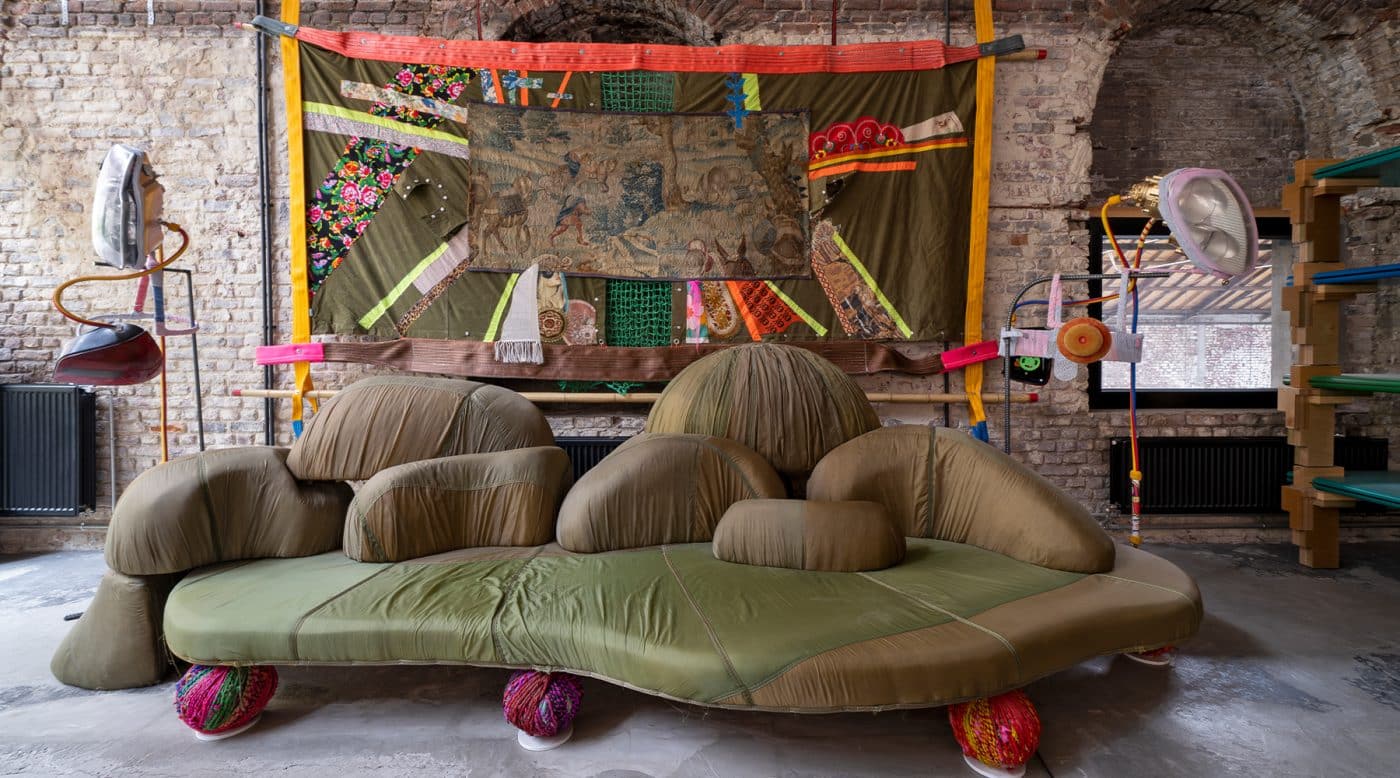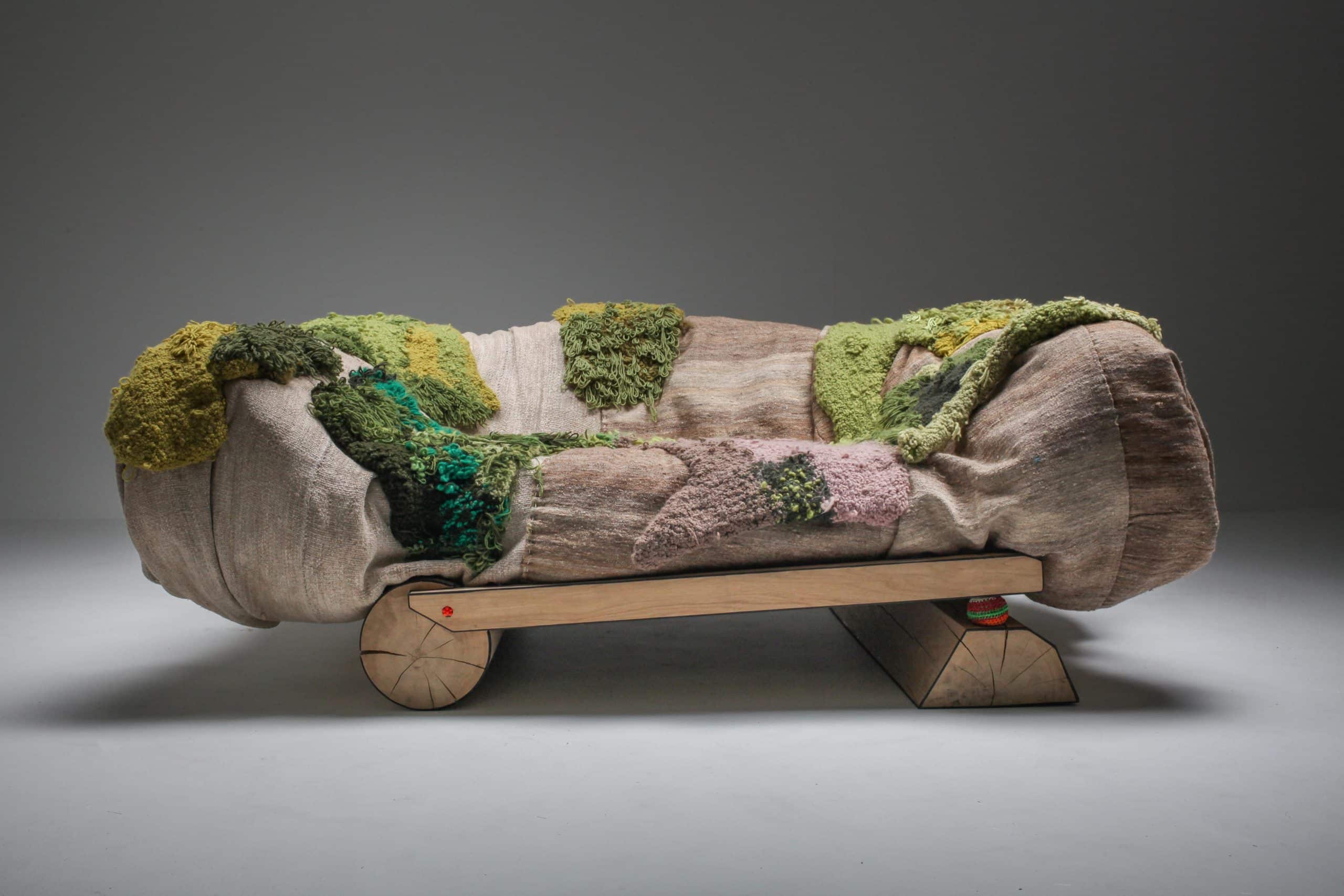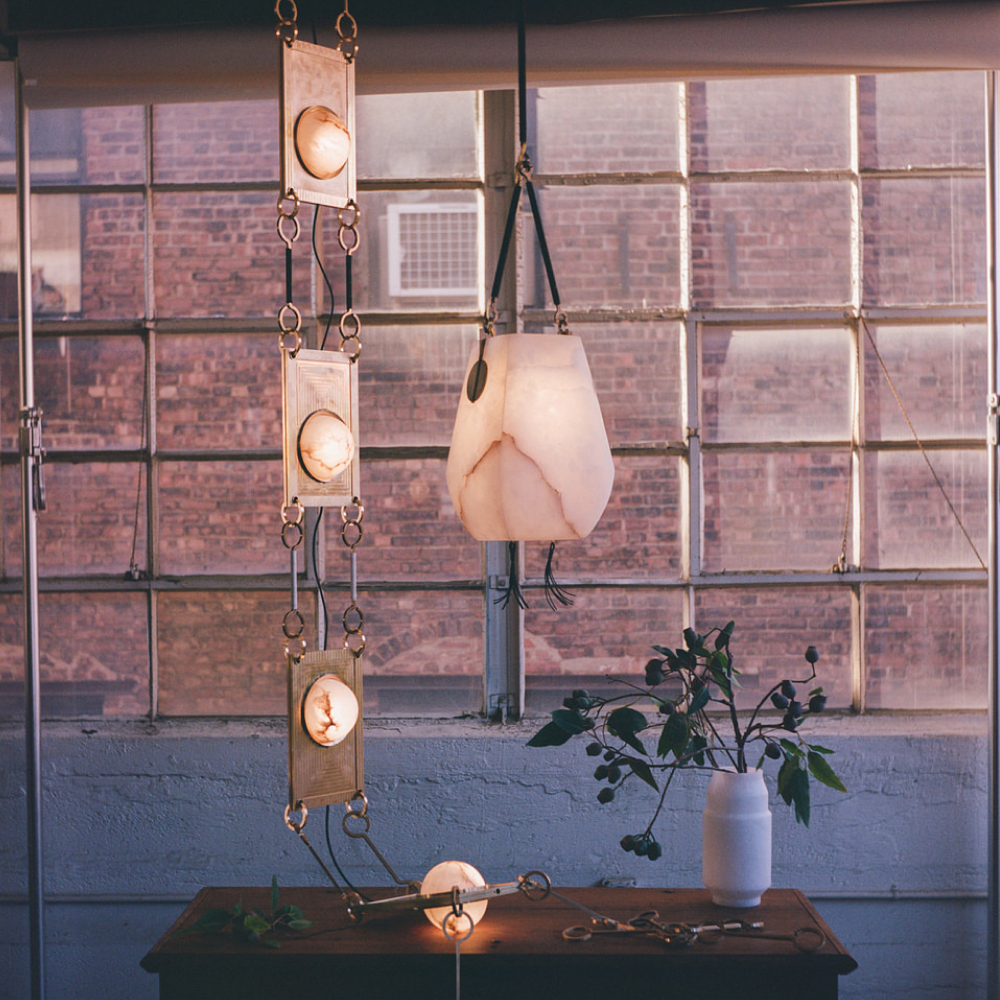July 30, 2023Growing up as the scion of the Belgian Vanhamme family of luxury furniture makers, Lionel Jadot had his parents’ design studio for his childhood playground. He was given leftover fabrics and materials and went off to create.
That spirit of play, working with recycled materials and inventor’s sense of freedom are at the heart of Jadot’s Brussels-based multidisciplinary studio, Atelier Lionel Jadot, which uses repurposed materials to create mix-and-match design pieces and also works with high-profile clients on interior redesigns. His own creations are eclectic and experimental, not necessarily resembling furniture at all.
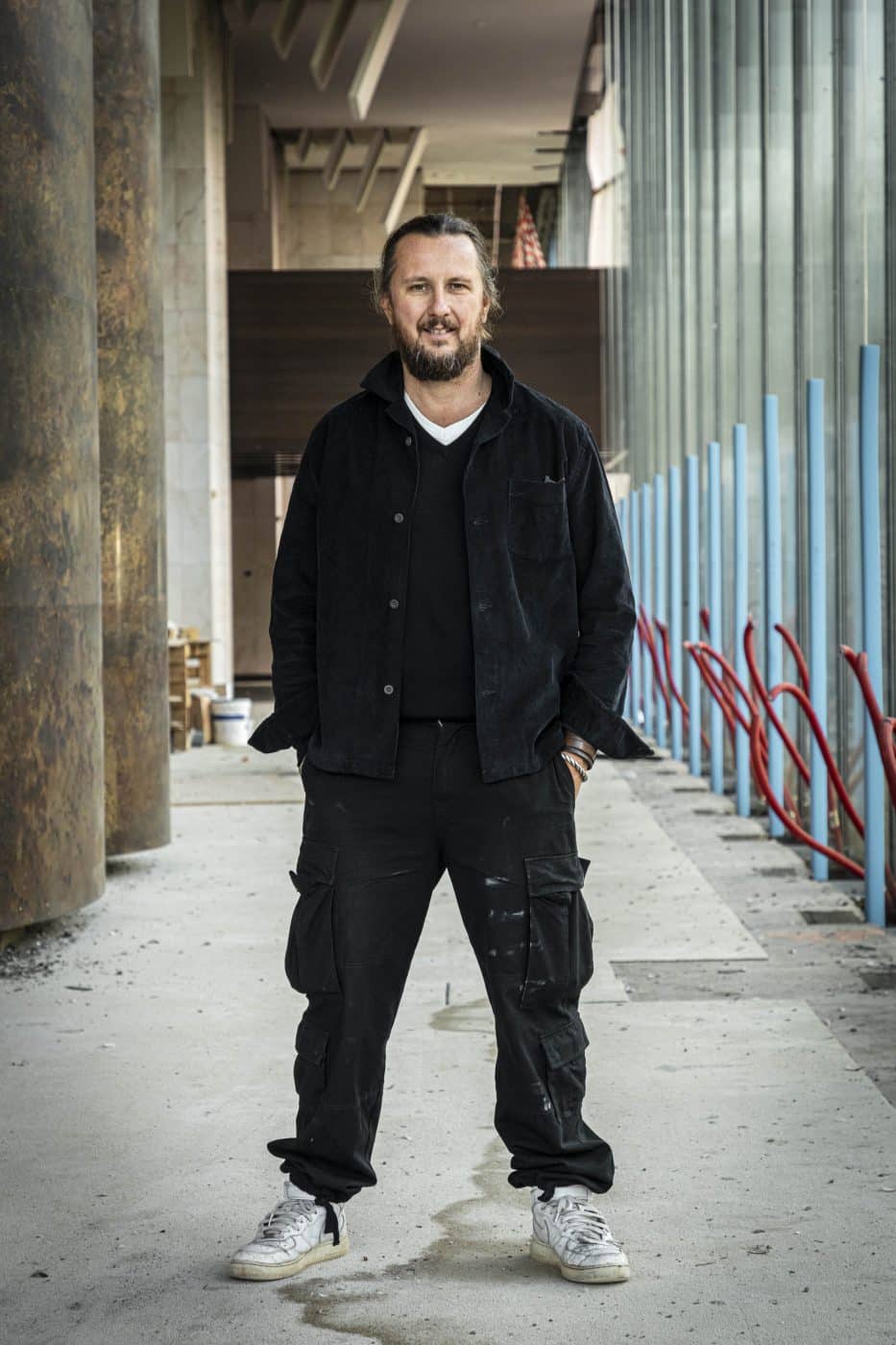
The steel, brass and wood Black Caterpillar chair, for example, is reminiscent of one of Jean Tinguely’s kinetic-art machines, with cleaner lines. Made of scrap metal he gets from a company that laser-cuts steel for industrial machinery, the chair takes on different forms as it moves. “The leftover shapes are very nice, metal that looks like lace,” Jadot explains. “I like to play with shadows, and when you put it in front of a white wall, it creates very graphic shadows.”
Other assemblage pieces include his Lost Highway chair, composed of three slabs of asphalt held together with steel rods, which he insists is “surprisingly comfortable”; contemporary table lamps constructed of “plaster trash” and wood; and his SLV table and chair, incorporating removable used cassette tapes.
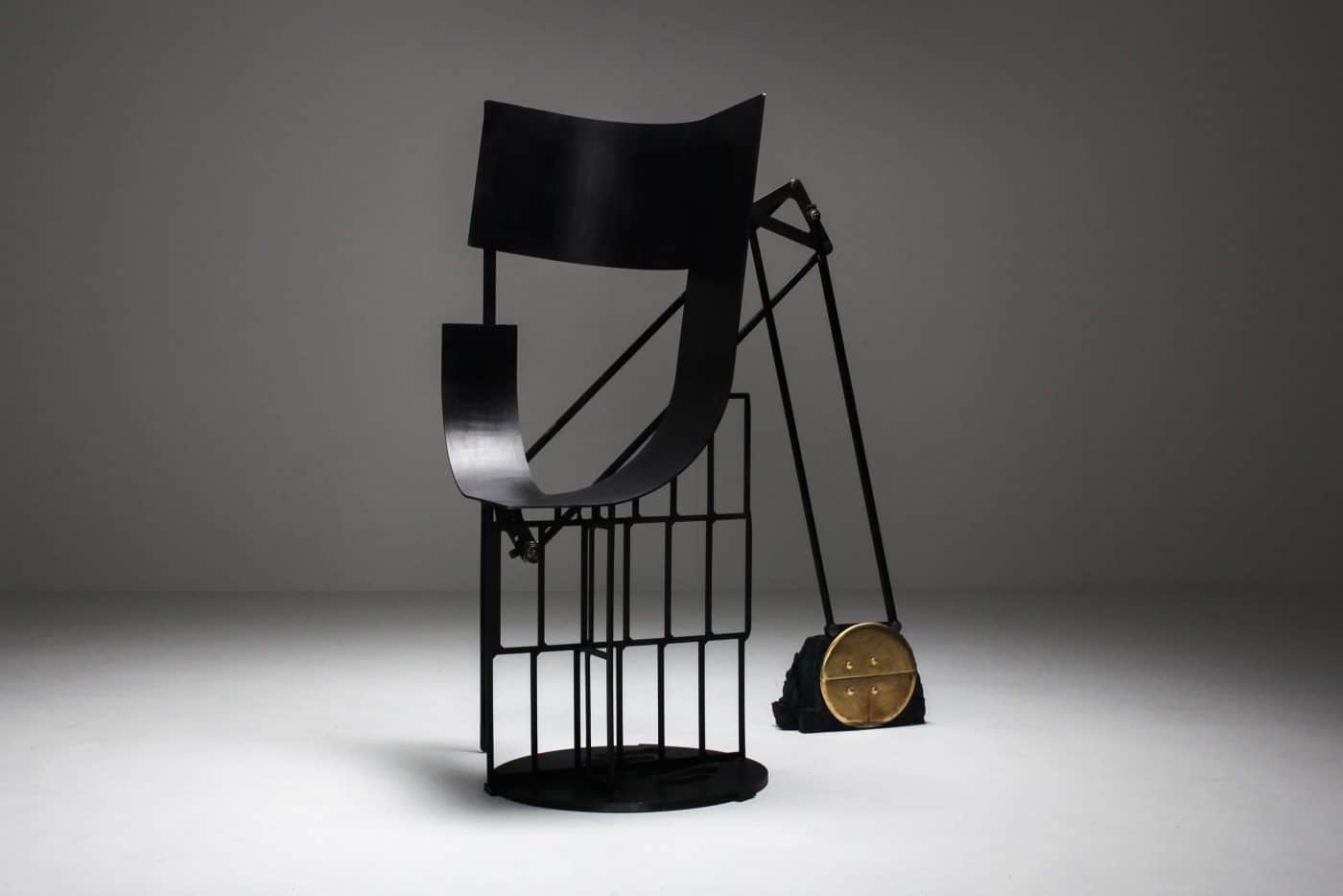
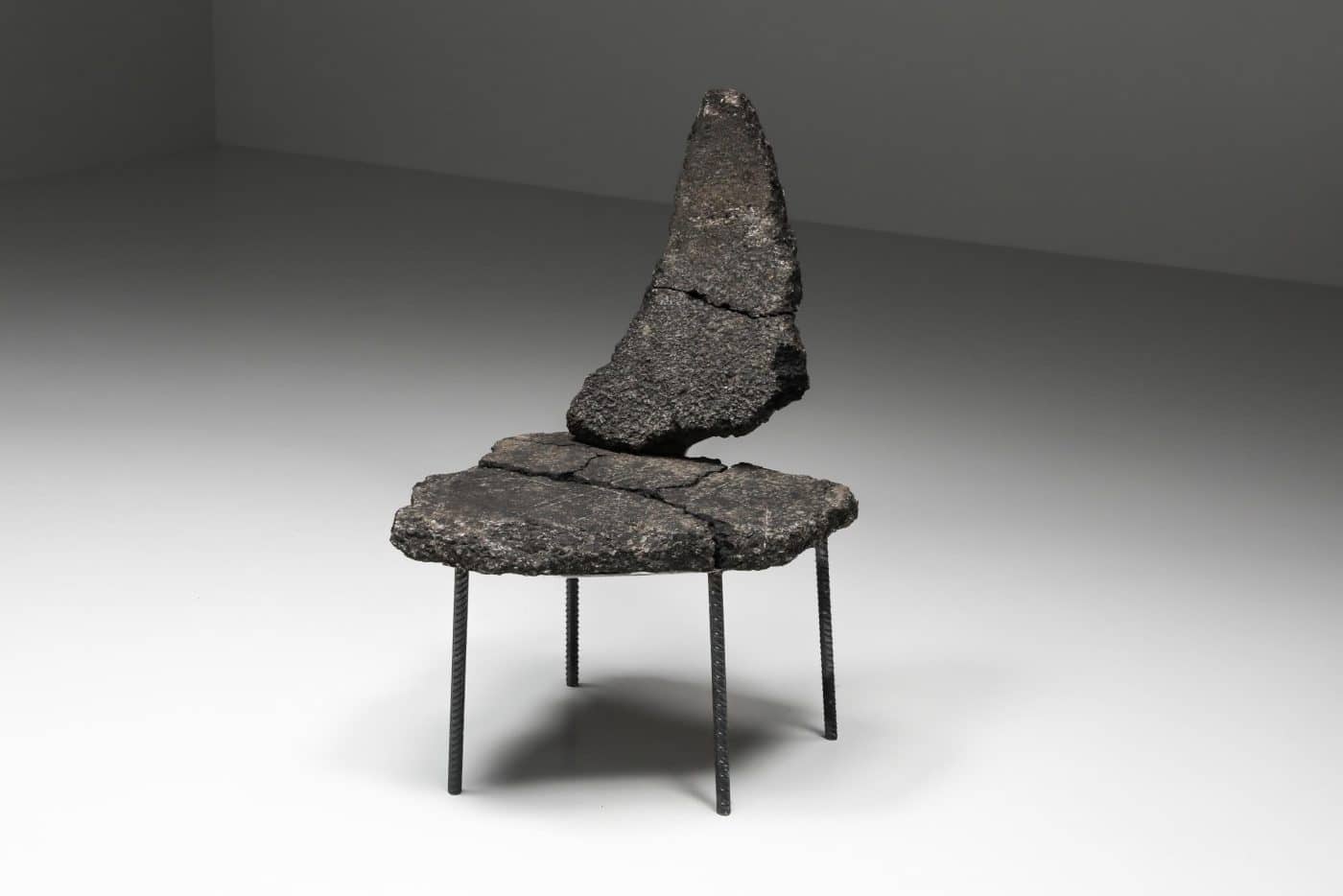
Jadot’s work, which he calls functional art, has been displayed at such art fairs as Design Miami/Basel, Milan Design Week and the Armory Show in New York. It has also been exhibited at the Design Museum of Brussels; Goldwood gallery, in Antwerp; Todd Merrill Studio, in New York; and in the home of the famous Belgian collector Galila Barzilaï-Hollander.
Jadot is not merely a furniture maker. Nor is he just an adept interior architect — although he is that, too, as evidenced most recently by his stunning work on the new 180-room Mix Brussels, which opened in June. He is also a force in Belgian contemporary art and design who has established a hub for creators on a historic estate just outside Brussels and is building a community of like-minded freethinking designers he likes to call a “hive.”

In 2019, Jadot took over a 65,000-square-foot 19th-century paper factory in Zaventem and turned it into a massive space for inventive exploration, inviting lamp makers, leather weavers, textile artists and woodworkers to be tenants. The resulting Zaventem Ateliers “has become like a big family, with a common energy and a common willingness to create something in a good way,” he says.
As a designer, Jadot is largely self-taught, although his training ground was the Vanhamme workshop, with its six-generation history of hand-crafting furniture and upholstery. He was preparing to attend design school in Florence at age 18, when his mother died. “Because my parents always did everything together, my father just stopped everything,” he recalls. “I said to my dad, ‘I will stay with you.’ ”
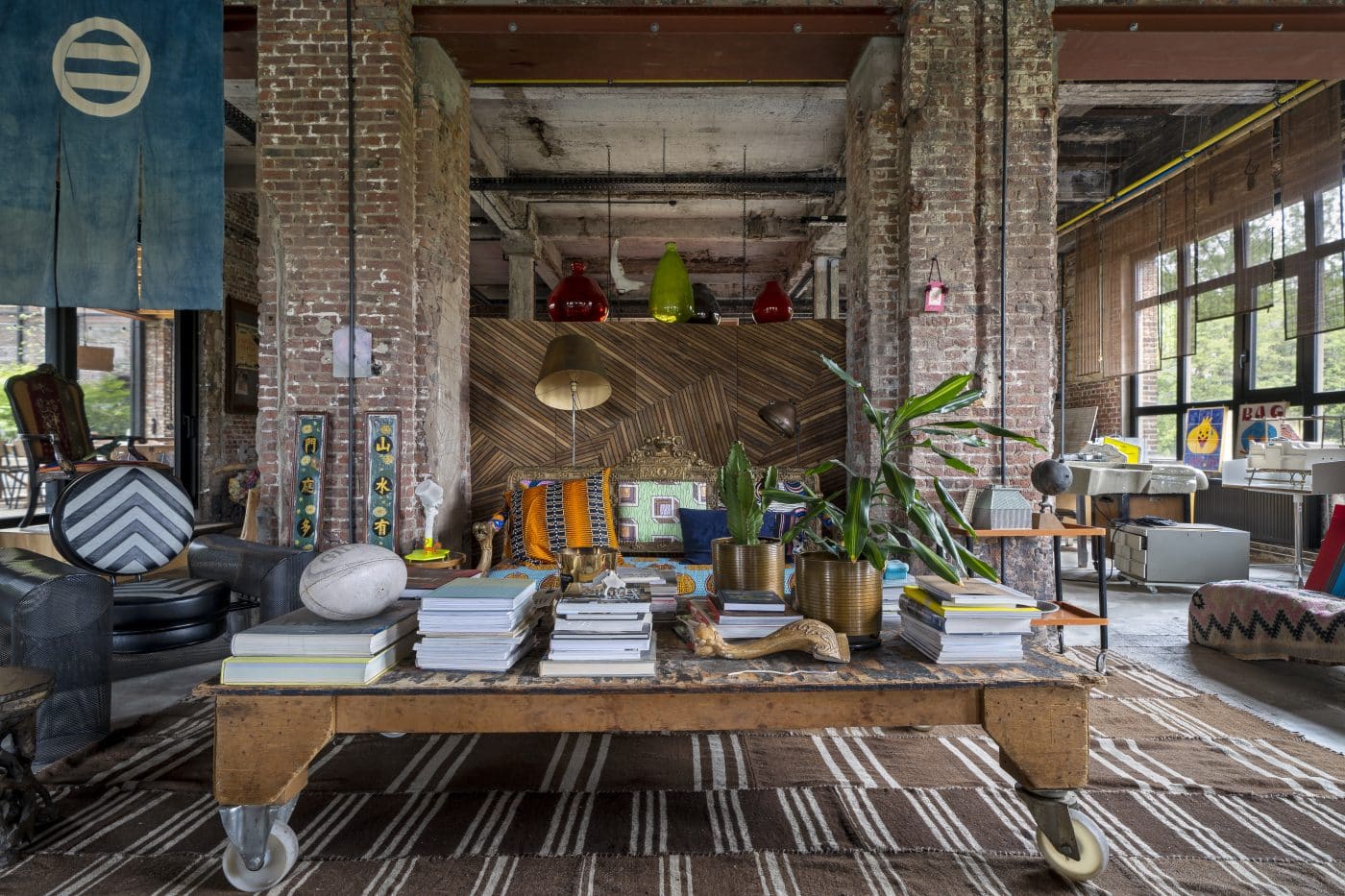
His father accepted his offer to take over the family furniture business, but only after they wrote on a piece of paper that Jadot was free to leave whenever he wanted. He ended up running the firm, working with 35 craftsmen, for 10 years.
While overseeing Vanhamme, Jadot began building furniture from repurposed materials — “by intuition,” he says. He also landed jobs to redesign “a library, a kitchen, a bathroom,” little by little working his way up to “a chalet in the mountains.” The string of projects led to the establishment of Atelier Lionel Jadot. “That was twenty-two years ago, and voilà!” he says. “After a few years, I left my father because he was okay to continue on his own.”
Then, one day, a few years ago, he was on the highway in Brussels and got stuck in a traffic jam.
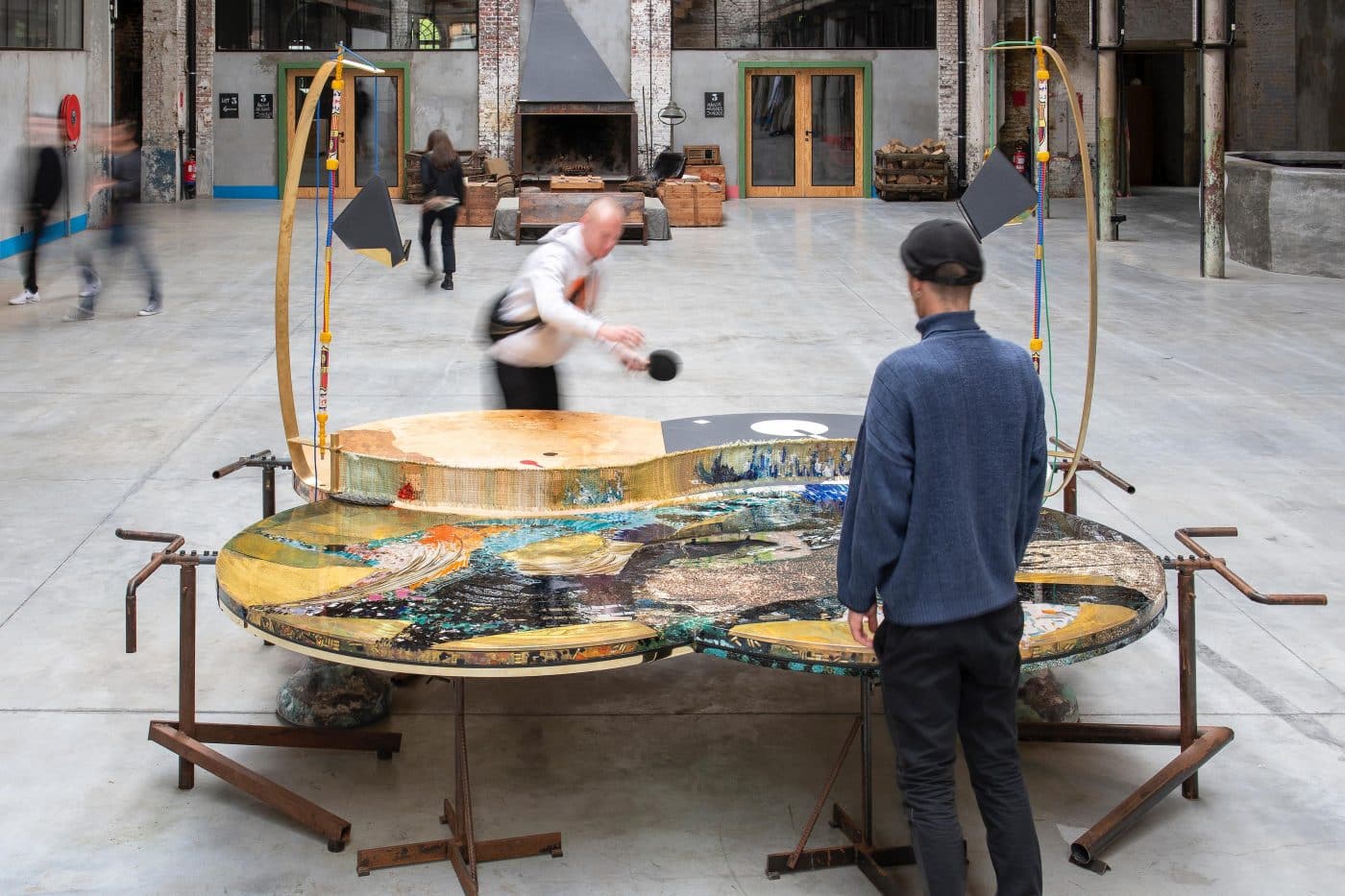
“I saw the roof of this building, so I drove out of the traffic and went to look at it,” he says. “I just totally fell in love. I wasn’t even looking for a new workshop. But then, I thought, ‘Let’s create for this space a new creative hub of collectible design, with a great collection of people who have knowledge and creativity.’ ”
Design writer Gisela Williams described Zaventem Ateliers in the New York Times as part of a European revival of medieval guilds. In addition to two dozen studio spaces, it has a large common space and an exhibition hall, as well as the Noguchi room, named after the Japanese designer Isamu Noguchi, where people can bunk down if they are working late.
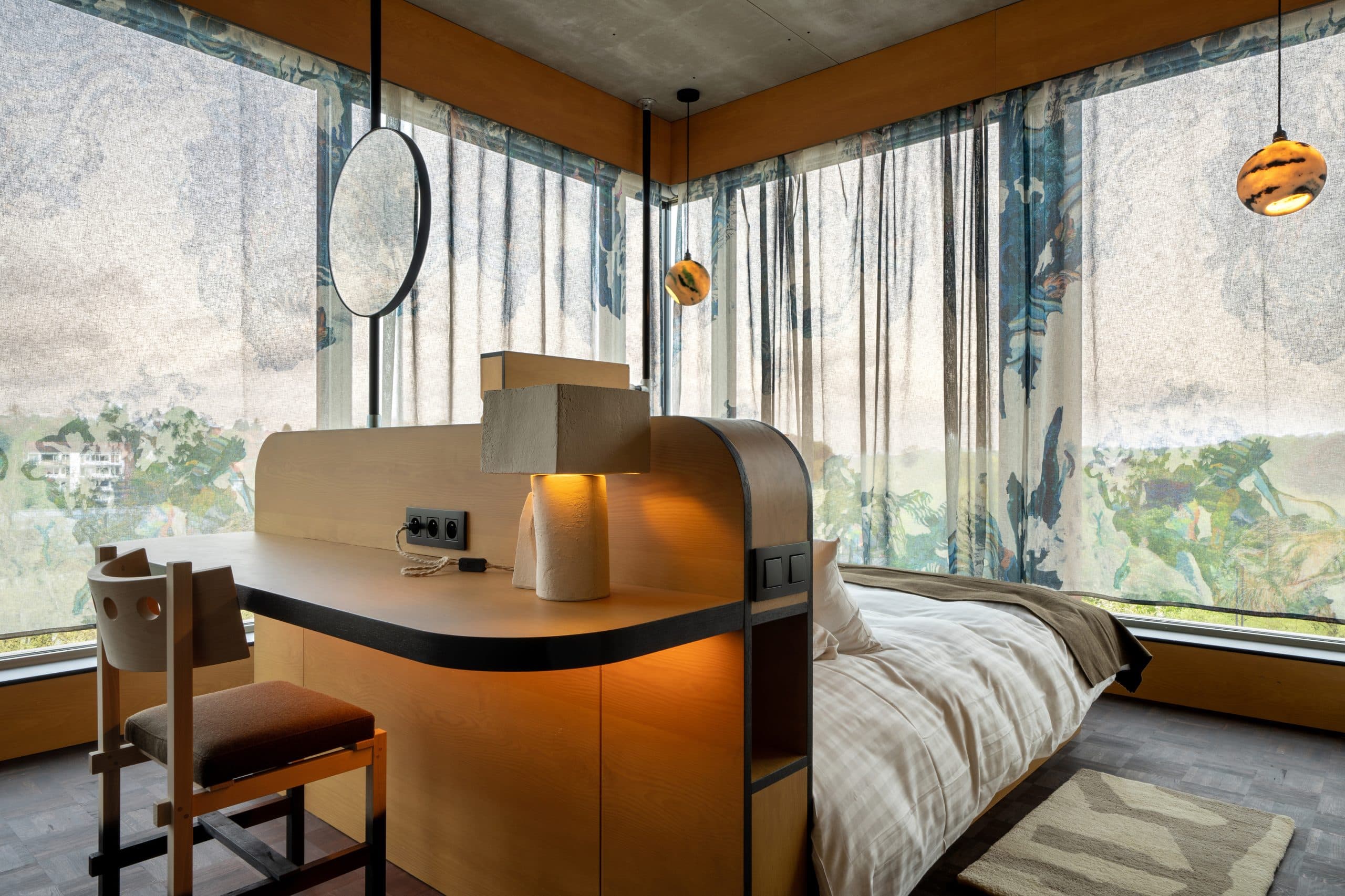
During Milan Design Week in 2022, a group of Zaventem’s creators took over a disused Necchi sewing machine factory in the city’s formerly industrial Baranzate district to showcase their wares, thus bringing wider design-world recognition to the collective.
When Jadot won the prestigious contract to transform the former headquarters of La Royale Belge, a striking 1960s Functionalist building designed by architects René Stapels and Pierre Dufau, into the new Mix hotel, he invited members of Zaventem Ateliers to create custom-made furniture and objects for the common spaces. All 25 studios participated, and Jadot enlisted 27 more designers from across Belgium to collaborate, so ultimately, 52 designers were involved.
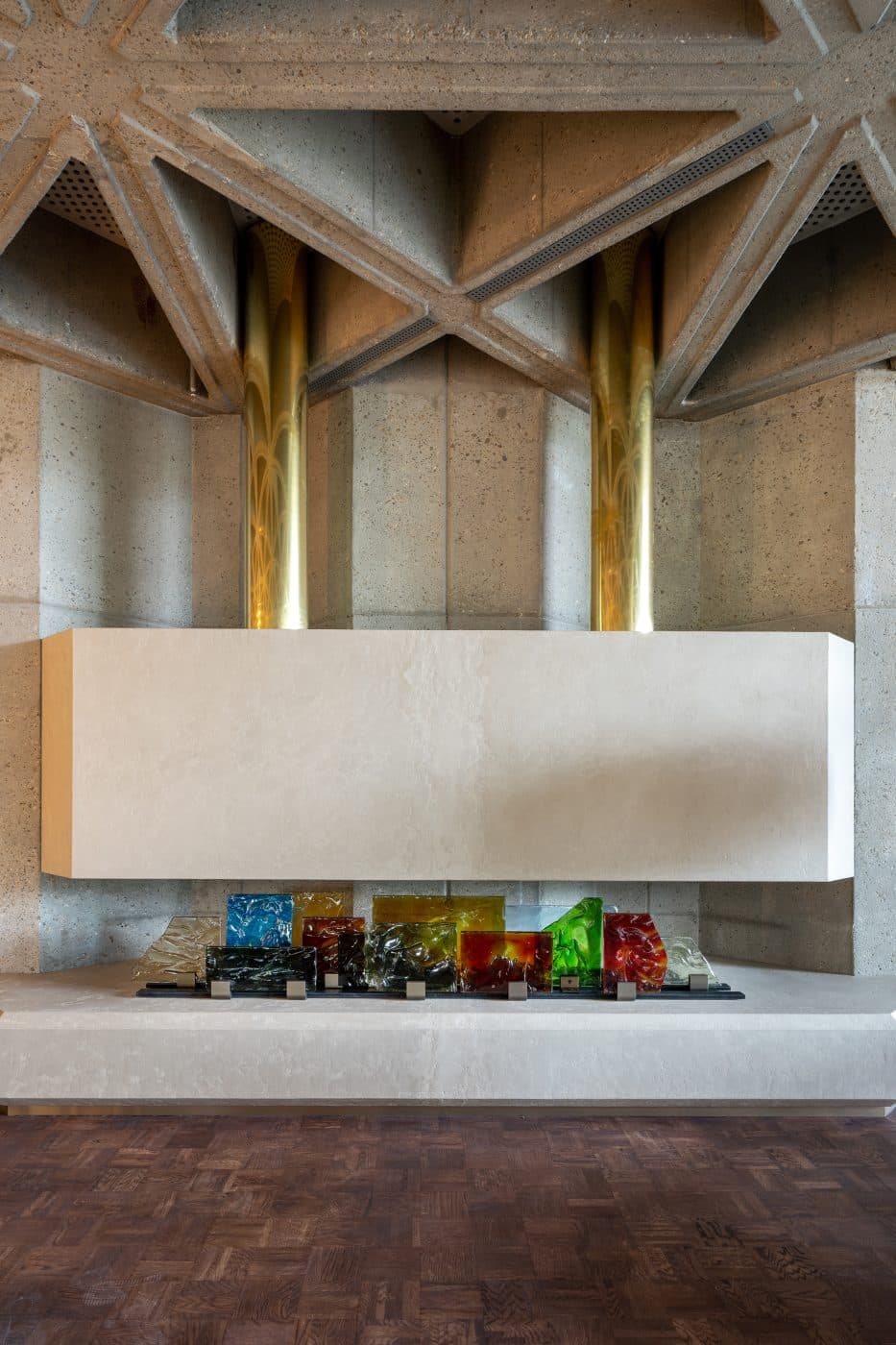
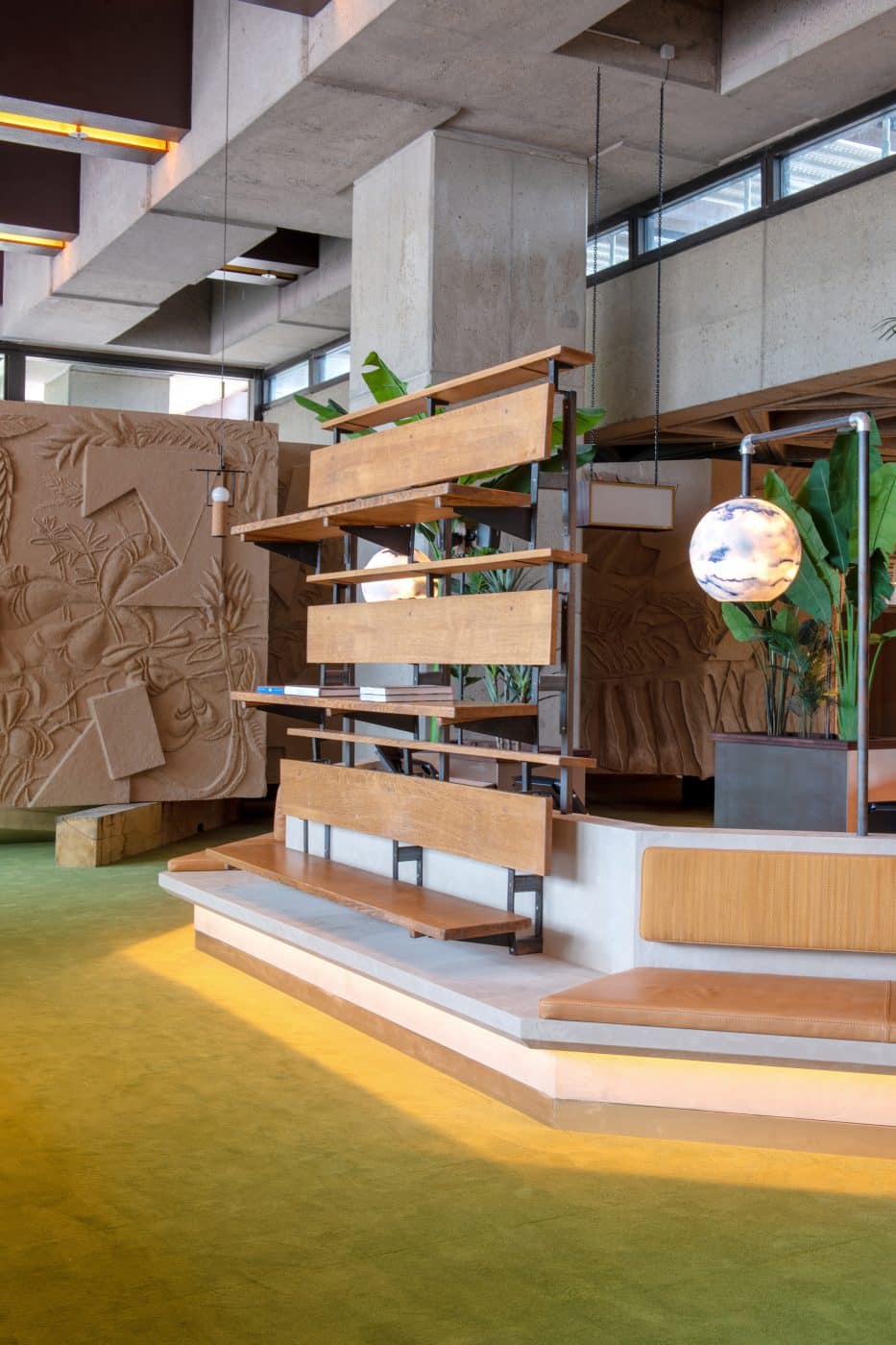
“I was like a movie director,” says Jadot. “We wrote the script, we put the script on the table, and we shared it with all the designers. It was super-open, and everyone brought something interesting.”
Jadot’s aim, he says, was to integrate new design features into the building’s distinctive architecture so that visitors would be asking themselves, Is this new or original? A large sculptural concrete fireplace incorporated into the lobby adds a Brutalist feature to the concrete structural underpinnings, while small details, such as bespoke brass doorknobs created with the local Woit Foundry, echo the elegance of the original interior.
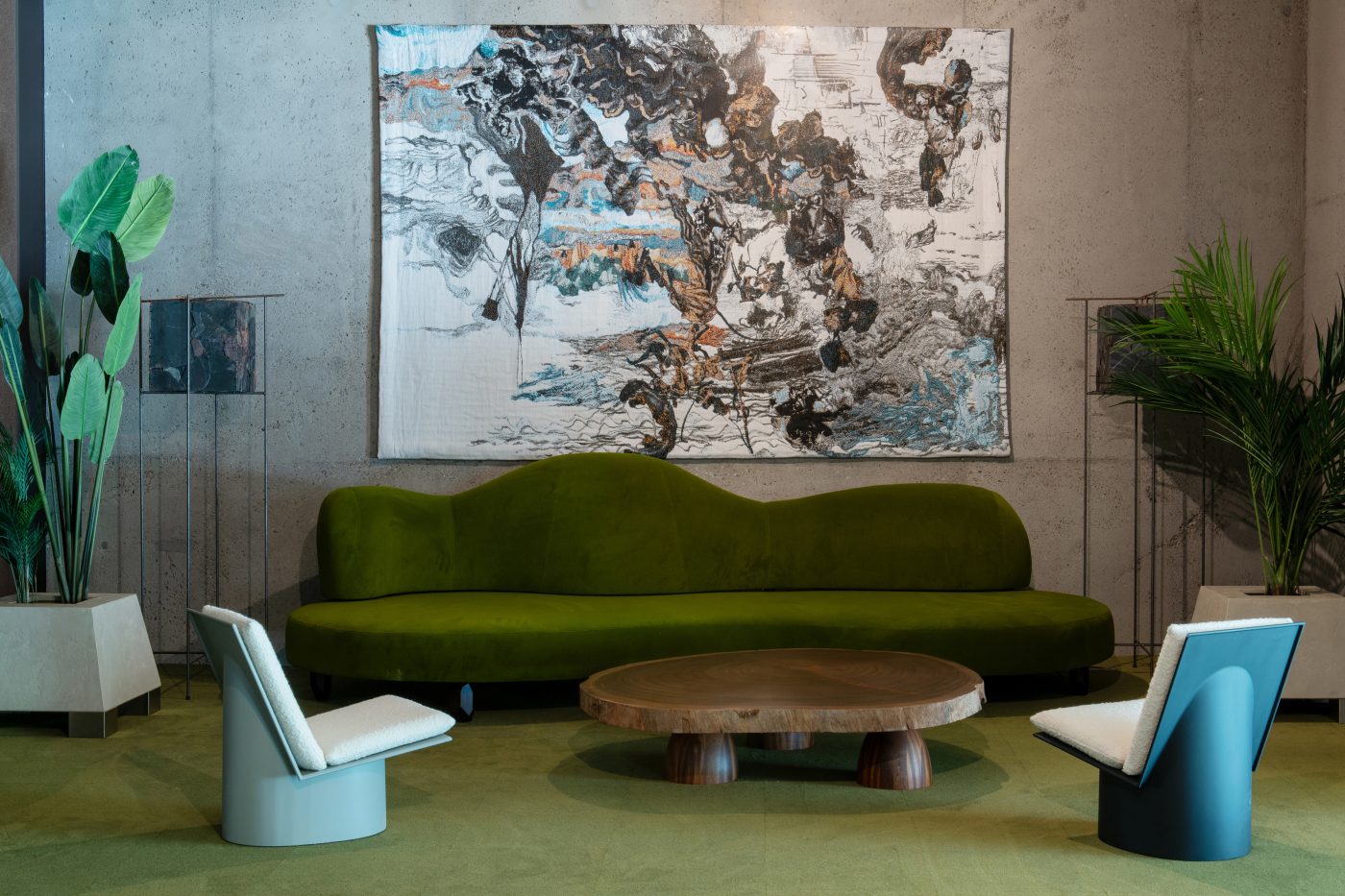
Bas-reliefs in cardboard papier-mâché made by the collective Papier Boulettes provide a discreet screen for the meeting rooms, while the hanging lamps in the bedroom are earth-toned orbs created by Parisian-born designer Roxane Lahidji using sustainable marbled salts. The reception desk, featuring a sculptural hand-formed partition of engraved brass, comes from Maison Armand Jonckers.
Back in his own space at Zaventem Ateliers — a 7,500-square-foot office plus a 4,300-square-foot workshop — Jadot continues to make furniture “when I find an hour here or there.”
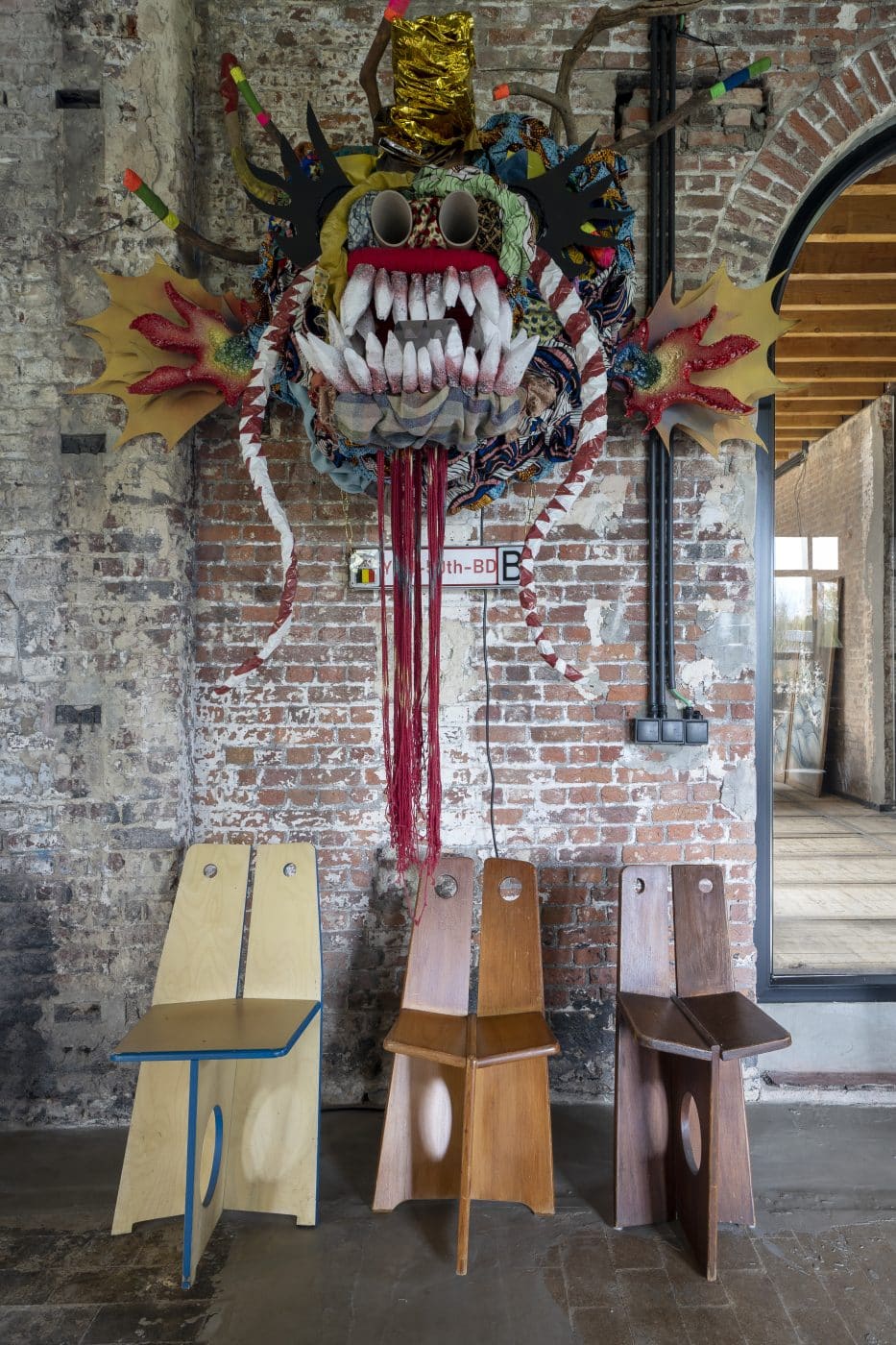
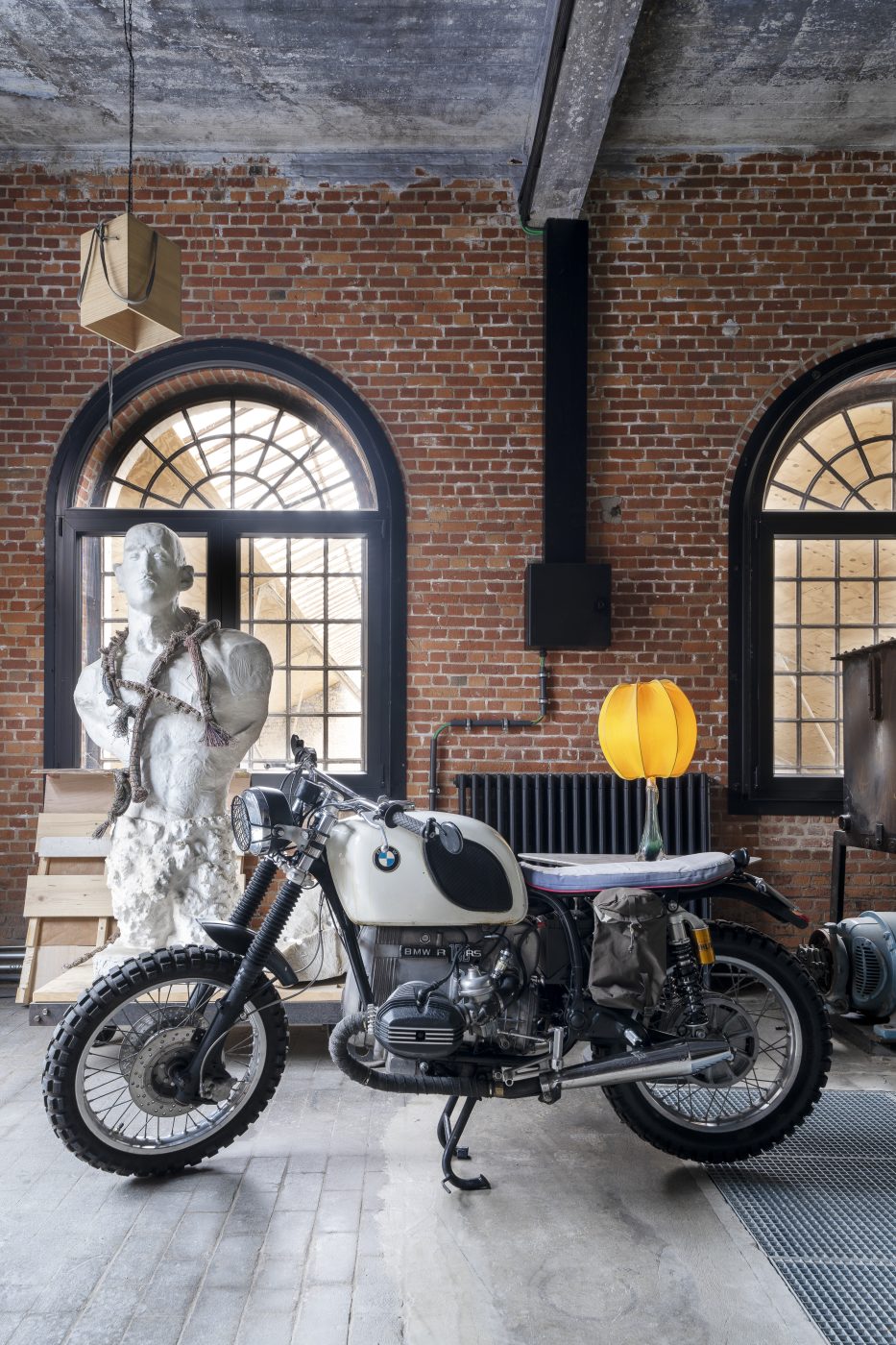
This includes the I Studebaker assemblage sofa, with a base composed of ceiling beams from a bank designed by Belgian architect Christophe Gevers and supple honey-colored cushions made of leather from a local vegetable-tanning operation. “It reminds me of the feeling of sitting in the back of an old car my grandfather might have been driving,” Jadot says.
His overall design goal has nothing to do with any particular aesthetic. “I’m material driven, for sure,” he says, “but I’m also creating an atmosphere. I try to nourish myself with honesty and creativity and also to stay far, far away from all the commercial ways of working. I go by my instincts.”
